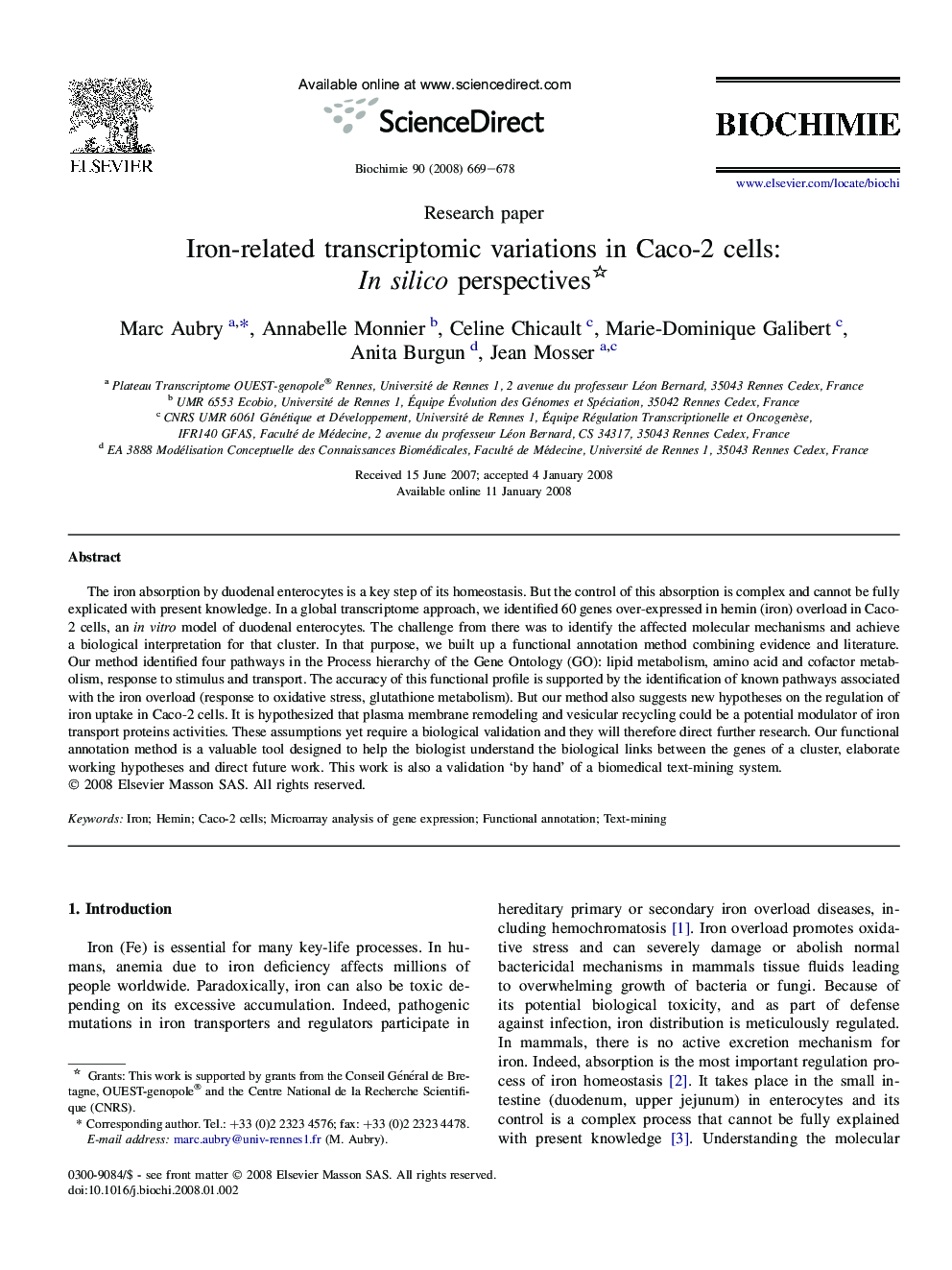| Article ID | Journal | Published Year | Pages | File Type |
|---|---|---|---|---|
| 1953135 | Biochimie | 2008 | 10 Pages |
Abstract
The iron absorption by duodenal enterocytes is a key step of its homeostasis. But the control of this absorption is complex and cannot be fully explicated with present knowledge. In a global transcriptome approach, we identified 60 genes over-expressed in hemin (iron) overload in Caco-2 cells, an in vitro model of duodenal enterocytes. The challenge from there was to identify the affected molecular mechanisms and achieve a biological interpretation for that cluster. In that purpose, we built up a functional annotation method combining evidence and literature. Our method identified four pathways in the Process hierarchy of the Gene Ontology (GO): lipid metabolism, amino acid and cofactor metabolism, response to stimulus and transport. The accuracy of this functional profile is supported by the identification of known pathways associated with the iron overload (response to oxidative stress, glutathione metabolism). But our method also suggests new hypotheses on the regulation of iron uptake in Caco-2 cells. It is hypothesized that plasma membrane remodeling and vesicular recycling could be a potential modulator of iron transport proteins activities. These assumptions yet require a biological validation and they will therefore direct further research. Our functional annotation method is a valuable tool designed to help the biologist understand the biological links between the genes of a cluster, elaborate working hypotheses and direct future work. This work is also a validation 'by hand' of a biomedical text-mining system.
Keywords
Related Topics
Life Sciences
Biochemistry, Genetics and Molecular Biology
Biochemistry
Authors
Marc Aubry, Annabelle Monnier, Celine Chicault, Marie-Dominique Galibert, Anita Burgun, Jean Mosser,
